PROLOGUE
White European scientists began to define what we now think of as race [in the 18 century]... and [their] arbitrary classification would have lasting consequences. #Saini
White European scientists began to define what we now think of as race [in the 18 century]... and [their] arbitrary classification would have lasting consequences. #Saini
Centuries ago, people placed boundaries around populations and territory as casually as moving pieces on a chess board. The boundaries could have been placed anywhere, but now we squirm to fit into them or jostle our way out of them. #Saini
Ultimately what matters isn’t necessarily where the lines are drawn, but what they mean. What does it mean to be black or white or something else, and why does it matter to us?
[...] The power hierarchy had white people of European descent sitting at the top. #Saini
[...] The power hierarchy had white people of European descent sitting at the top. #Saini
Knowledge is not just an account of what we know, but has to be understood as something shaped by those who happen to hold power when the account was written. #Saini
Because this is how power works. [The British Museum] takes, it claims, and it keeps. It makes you believe that this is where the objects belong. It’s designed to put you in your place. #Saini
Throughout, white thinkers told us that their cultures were better, that they were the proprietors of thought and reason, and they married this with the notion that they belonged to superior races. These became our realities.
The truth is something else. #Saini
The truth is something else. #Saini
Chapter 1 #Saini
Bewilderment—or rather, an unwillingness to try and understand the [Australia& #39;s] original inhabitants—suited Europeans in the eighteenth century because it also served the belief that they were entering a territory they could justly claim for themselves. #Saini
It’s not easy to accept when you’ve grown up in a society that tells you concrete skyscrapers are the symbols of advanced culture, but when viewed from perspective of deep time—across millennia rather than centuries, in context of long historical trajectories—it becomes clearer.
<- Empires and cities decline and fall. It is smaller, indigenous communities who survive throughout, whose societies date to many thousands rather than many hundreds of years old. #Saini
“Smoothing the pillow [of a dying race]” was bloodthirsty work…. Equally harsh was the cultural genocide. #Saini
After the arrival of the Europeans, even the creation of art sharply declined. It took until 1976 for Aboriginal people even to be able to gain legal rights over their land. Throughout, the victims had no choice.
#Saini
#Saini
“They weren’t allowed to practice their culture, they weren’t allowed to mix, and they weren’t allowed to speak their language.” Having been told they were inferior, that theirs was a life to be ashamed of, they adopted different ways of living—ways they were told were better.
In recent decades, as scholars have tried to piece together the past and make sense of what happened, as they share with Australians in the long process of assessing the damage and its impact, we see an overarching story about how to define human difference. ->
#Saini
#Saini
<- It is about where people have drawn boundaries around other groups of people, about how far inside us and how far back in time the disparities are thought to stretch. These are the parameters of what we now call race. #Saini
When the first European encounters with Australians occurred, when the rules were drawn for how to treat indigenous peoples, science and archaeology began to be woven in. And they have remained interwoven ever since. #Saini
A number of Enlightenment thinkers, including influential German philosophers Immanuel Kant and Georg Wilhelm Friedrich Hegel, defined humanity without really having much of an idea how most of humanity lived or what it looked like. #Saini
While a few Enlightenment thinkers did resist the idea of a racial hierarchy, many including the French philosopher Voltaire & the English thinker Hume, saw no contradiction between the values of liberty & fraternity & their belief that nonwhites were innately inferior to whites.
By the nineteenth century, those who didn’t live like Europeans were thought not yet to have fully realized their potential as human beings. #Saini
History shows us that it’s only a small leap from believing in cultural superiority to believing in biological superiority, that a group’s achievements result from their innate capacities. #Saini
Whiteness became the visible measure of human modernity—an ideal that went so far as to become enshrined in Australian law. #Saini
The 19th-c saw an intellectual shift away from the Enlightenment view of a single humanity w/ shared origins. This wasn’t always just because of racism. Scientists had been funneled into a certain way of thinking about the world partly because of where they happened to be based.
For some, an unwillingness to accept African origins may be motivated by racism or nationalism, but this isn’t the case for all. There are those for whom it’s simply a way of squaring old origin stories with modern science. ->
#Saini
#Saini
In Australia, for instance, many indigenous people favor the multiregional hypothesis because it sits closer to their own belief that they have been here from the very beginning. Indeed, this is an origin myth shared by cultures in many parts of the world. ->
#Saini
#Saini
<- Until further evidence comes along (and maybe even after it does), the theory of a people’s origins can be to some extent a matter of choice, affected as much by personal motivations as by data. #Saini
The past can never be completely known, so the classic multiregional hypothesis may hang on, despite its lack of support among scientists. It still has power. #Saini
Fairly soon after it was found that it was modern-day Europeans who have the closer association to Neanderthals—not, as it turned out, Aboriginal Australians—the image of the Neanderthal underwent a dramatic makeover. #Saini
If it had turned out that Aboriginal Australians were the ones to possess that tiny bit of Neanderthal ancestry instead of white ppl of Eur descent, would our Neanderthal cousins have found themselves quite so remarkably reformed? Would they have been welcomed w/ such warm hugs?
Humans evolved in Africa first. Not in just one garden of Eden, but among a broadly distributed population more or less like stops across a subway system. People were moving around along the rivers and coastlines. #Saini
<- In short, according to this view we are a product of longer periods of time and space, a mixture of qualities that incubated in Africa. #Saini
It’s a challenge to researchers who have dedicated their careers to identifying the first modern humans and defining what they were like, chasing the tail of the European Enlightenment philosophers who thought they already knew.
Archaeologists are still trying to hunt down the earliest cave art, the earliest sign of symbolic thought, in the hope of pinpointing the magic moment at which we emerged, and where. ->
#Saini
#Saini
<- Geneticists, too, hunt for magical ingredients in our genome, the ones that will indicate what makes us so remarkable. Yet increasingly the evidence suggests that it was never that simple. #Saini
When Enlightenment thinkers looked at the world around them, some took the politics of their day as the starting point. It was the lens through which they viewed all human difference. We do the same today. The facts only temper what we think we already know. #Saini
Even when we study human origins, we don’t actually start at the beginning. We start at the end: with our assumptions as the basis for inquiry. We need to be persuaded before we cast aside our prior beliefs about who we are.
#Saini
#Saini
<- The way new research is interpreted is always at the mercy of the old ideas. #Saini
It isn’t just about how many fossils we have or how much genetic evidence. It’s also about squaring the stories we have about who we are with the information we’re given. #Saini
Chapter 2
It’s a Small World: How did scientists enter the story of race? #Saini
(Warning: this chapter covers disturbing details of past injustices Black people suffered)
It’s a Small World: How did scientists enter the story of race? #Saini
(Warning: this chapter covers disturbing details of past injustices Black people suffered)
“Man is an animal suspended in webs of significance he himself has spun,” the anthropologist Clifford Geertz wrote in 1973. These webs are ours only until someone comes along to pull at the threads. #Saini
For European scientists, [human] zoos offered more than fleeting amusement value. They were a source of biological data, a laboratory stocked with captive human guinea pigs. “They came to the human zoos to learn about the world” #Saini
Researchers measured head size, height, weight, and color of skin and eyes, and recorded the food the subjects ate, documenting these observations in dozens of scientific articles. With their notes they set the parameters for modern race science. #Saini
Race was a fairly new idea. Some of the 1st known uses of the word date from as recently as the 16th-c, but not in the way we use it now. Instead, at that time it referred to a group of people from common stock, like a family, a tribe or perhaps—at a long stretch—a small nation.
Even up until the European Enlightenment in the 18th century, many still thought about physical difference as a permeable, shifting quantity. It was rooted in geography, perhaps explaining why people in hotter regions had darker skins. ->
#Saini
#Saini
<- If those same people happened to move somewhere colder, it was assumed their skins would automatically lighten. People
could shift their identity by moving away or converting to another religion. #Saini
could shift their identity by moving away or converting to another religion. #Saini
The notion that race was a hard and fixed feature that people couldn’t choose, an essence passed down to their children, came slowly, in large part from Enlightenment science. #Saini
An ad in London’s Morning Post newspaper in 1810, on the arrival of most notorious of all racial freak shows. “From the Banks of the River Gamtoos, on the Borders of Kaffraria, in the interior of S Africa, a most correct & perfect Specimen of that race of people: Hottentot Venus”
When Saartjie Baartman died in 1815, just five years after being displayed in London, Cuvier dissected her, removing her brain and genitals, and presented them in jars to the French Academy of Sciences. #Saini
The 19th century scientists turned the study of humans into the most gruesome art. People became objects, grouped together like museum exhibits. Any sense of common humanity was left at the door, replaced by the cold, hard tools of dissection and categorization. #Saini
Following a lifetime of being relentlessly poked and prodded, Baartman continued to be on show for a 150 years after her death. Her abused body ended up at the Musée de l’Homme, the Museum of Man, near the Eiffel Tower; a plaster cast of it stood there until as recently as 1982.
<- It was only in 2002, after a request from Nelson Mandela, that Baartman& #39;s remains were removed from Paris and finally returned to South Africa for burial. #Saini
Race science emerged in the context of colonial political ideologies, of oppression and exploitation. It was a need to classify people, make them as homogeneous as possible. Grouping people made it easier to control them. #Saini
It is no accident that modern ideas of race were formed during the height of European colonialism, when those in power had already decided on their own superiority. #Saini
By the nineteenth century, the possibility that races existed and some were inferior to others gave colonialism a moral kick in the drive for public support. ->
#Saini
#Saini
<- The truth—that European nations were motivated by economic greed or power—was harder to swallow than the suggestion that the places they were colonizing were too uncivilized and barbaric to matter, or that they were actually doing the savages a favor. #Saini
In the United States, the same tortured logic was used to justify slavery. … If you could say that the slavers were naturally distinct from the slaves, then you have essentially a moral argument in favor of slavery. #Saini
Responsibility for being enslaved was turned back on the slaves themselves. They were in this miserable, degrading position not because they had been forcibly enslaved, it was argued, but because it was their biological place in the universe. #Saini
Propelled by a belief that black people had their own unique diseases, Samuel Cartwright, a medical doctor in 1851 characterized what he saw as a mental condition particular to black slaves, which he coined “drapetomania,” or “the disease causing Negroes to run away.” #Saini
In place of universal humanity came a self-serving version of the human story in which racial difference became an excuse for treating people differently. Time and again, science provided the intellectual authority for racism, just as it had helped define race to begin with.
Race science became a pastime for nonscientists, too. The French aristocrat and writer Count Arthur de Gobineau, in An Essay on the Inequality of the Human Races, published in 1853, proposed that there were three races #Saini
Darwin, even though he made such a bold and original contribution to the idea of racial unity, also seemed to be unembarrassed by his belief in an evolutionary hierarchy. Men were above women, and white races were above others. #Saini
"Freeing slaves was a morally good thing for white men to do, but the raw facts of biology made the idea of equal rights—for women as well as for black people—little more than an “illogical delusion.”" The English biologist Thomas Henry Huxley, writing in 1865. #Saini
Darwinism did nothing to slow racism. Instead, ideas about the existence of different races and their relative superiority just became repackaged in new theories. Science—or the lack of it—in the end legitimized racism, rather than quashing it. #Saini
The idea of race didn’t make people treat other people as subhuman. They were already treated as subhuman before race was invoked. But once it was invoked, the subjugation took on a new force. #Saini
Something about treating human difference as a science gave it a peculiar quality. Observing humans turned the humans being observed into strange beasts. ->
#Saini
#Saini
<- While maintaining the unimpeachable impression of scientific objectivity, somehow the scientist himself always turned out to be the gold standard of beauty and intelligence. His own race was safe in his hands. #Saini
The scientific distance created by believing that racial hierarchies existed in nature, uneven balance of power, allowed human zoos to treat their performers as less than equals, making life for them fatally precarious. Many who lived in the zoos died from pneumonia/tuberculosis.
Ten years later, in despair because he couldn’t return home to the Congo, Benga borrowed a revolver and shot himself through the heart. #Saini
It’s difficult not to see that the reason anyone pursued the scientific idea of race was not so much to understand the differences in our bodies as it was to try to justify why we lead such different lives. Why else? ->
#Saini
#Saini
What the people who created the human zoos really wanted to know was why some people are enslaved and others free, why some prosper while others are poor, and why some civilizations have thrived while others haven’t. ->
#Saini
#Saini
Imagining themselves to be looking objectively at human variation, in fact scientists were often looking for answers in our bodies to questions that existed far outside them. Race science had always sat at the intersection of science and politics, of science and economics. ->
Race wasn’t just a tool for classifying physical difference but was also a way of measuring human progress, of placing judgement on the capacities and rights of others. #Saini
The end of chapter 2 #Saini
Chapter 3 Scientific Priestcraft: Deciding that races could be improved, scientists looked for ways to improve their own
#Saini
#Saini
If science is always so innocent, how is it that members of such a large and prestigious scientific organization could have sold themselves to a murderous political regime as recently as the middle of the twentieth century? #Saini
The well of scientific ideas from which Hitler and others in his regime drew their plans for “racial hygiene,” leading ultimately to genocide, didn’t originate in Germany alone. ->
#Saini
#Saini
<- They had been steadily supplied by race scientists for more than a century from all over the world, supported by well-respected intellectuals, aristocrats, political leaders, and women and men of wealth. #Saini
Francis Galton, a young cousin of Charles Darwin and the father of eugenics, dreamed of a “utopia” of highly bred superpeople, and he made creating such a perfect society his lifelong mission. #Saini
Karl Pearson became the first professor of national eugenics in 1911, after Galton died. Pearson’s greatest contribution, the thing that people remember him for, is founding the discipline of statistics. A lot of work on that was done with Galton. ->
#Saini
#Saini
<- If you’re going to bring Galton& #39;s science down to anything in particular, is a statistician. #Saini
Before he settled down into science, Galton had been an explorer. He was lavishly funded by the estate of his wealthy father, who had made a fortune from the slave trade and later, when the slave trade was prohibited, from gun manufacturing and banking. #Saini
Through eugenics Galton saw a way of using what he thought he knew about human difference, shored up by Darwin’s theories of natural selection, to systematically improve the quality of the British race. #Saini
“Darwin said that humans are animals like any other animal. Galton said, well, if that’s the case then we can breed them better" #Saini
The work that [Galton] did is fundamental to the story of scientific racism. So not only is he a racist, he is part of the way we invented racism, and the way that we think about it. #Saini
Eugenics belonged firmly to establishment science, and among intellectuals, it wasn’t just mainstream, it was almost fashionable. #Saini
Managing reproduction was the linchpin of eugenics, even attracting a fan in the English women’s rights activist and birth control pioneer Marie Stopes. #Saini
The philosopher Bertrand Russell suggested that the state might improve the health of the population by fining the “wrong” type of people for giving birth. #Saini
Eugenics was more than a theory—it was a plan in search of policymakers. Winston Churchill, then first lord of the Admiralty, was welcomed as vice president at the first International Eugenics Congress, held at London’s grand Hotel Cecil in 1912. #Saini
The state of Indiana passed the world’s first involuntary sterilization law in 1907, informed by eugenicists who argued that criminality, mental problems, and poverty were hereditary. #Saini
In 1910 a Eugenics Record Office was established at Cold Spring Harbor on Long Island, with support from John D. Rockefeller & later, funding from the Carnegie Institution of Washington. Its board of scientific directors included Alexander Graham Bell & Irving Fisher. #Saini
The hardware behind at least one of the United States’ most ambitious eugenics projects came from none other than IBM, the same company that went on to supply the Nazi regime in Germany with the technology it needed to transport millions of victims around concentration camps.
[One] vocal critic of eugenics was the biologist Alfred Russel Wallace, who had come from humble beginnings to become an important and well-loved researcher and was credited with coming up with the theory of evolution by natural selection at the same time as Darwin. #Saini
In its early days, particularly for its mainstream supporters, eugenics focused on improving the racial stock by weeding out those at the margins: the feeble-minded, the insane, and the disabled. But as time wore on the umbrella inevitably expanded. ->
#Saini
#Saini
Karl Pearson, who succeeded Galton as the main force behind eugenics after the latter’s death in 1911 and shared his views on race, believed that since other races were inferior to his own, intermixing was also dangerous to the health of the population. ->
#Saini
#Saini
<- By [Pearson& #39;s] logic the very existence of these other races represented something of a threat. #Saini
Namibia was the first place where the Germans built a concentration camp [...] Depending on where your hair fell on the scale was the difference between life and death. #Saini
In the United States, arguably the most racially charged place in the world at the time, evolutionary theory and eugenics came along at just the moment that intellectual racists could deploy them to full effect. ->
#Saini
#Saini
When the Eugenics Record Office was opened at Cold Spring Harbor, New York, a news item in the journal Science announced that one of the purposes of the new office would be “the study of miscegenation in the United States,” the mixing & intermarriage of different racial groups.
In 1916 a wealthy American law graduate named Madison Grant published a book that took eugenics to another level… Grant warned against racial intermixing in the belief that this would damage white racial purity even further. #Saini
[tell me again how the current US policy on immigration is different to that of the eugenics informed immigration policy of the 1910s and 1920s]
Grant’s work was referenced by the Ku Klux Klan. […] Adolf Hitler wrote, “The book is my bible." #Saini
It was all so long ago—we imagine that it’s well and truly over now. We think of the horrors of the Holocaust and earlier genocides, of slavery & colonialism, of the many millions who were killed, of the twisted logic behind these actions, as belonging to another time. ->
#Saini
#Saini
We imagine that the end of WWII spelled an abrupt end for race science. Eugenics is a dirty word. We’re enlightened now. We’re wiser. But the story doesn’t end quite so quickly. Although they may have tempered their politics, race scientists didn’t simply disappear after the war.
<- Those who had built their work around eugenics and studying human difference, who staked their careers on these studies, just found new avenues. #Saini
Otmar von Verschuer, who had plundered the tiny bodies of Auschwitz victims for his twin studies during the Holocaust: after being banned from teaching temporarily, in 1951 became professor of human genetics at the University of Münster.
#Saini
#Saini
<- Many scientists similarly changed tack, gently maneuvering themselves out of eugenics into allied fields that studied human difference in less controversial and more rigorous ways, such as genetics. Many stopped using the word “race” altogether. #Saini
<- Science learned at least one lesson: if scientists wanted to study human variation, they had to try to stay away from politics. #Saini
The genetics around inheritance, once it was better understood, didn’t support the idea that humans could breed themselves to perfection, whatever perfection meant. The way we inherit traits from our parents turns out to be more complicated than Galton imagined. #Saini
There is actually no guarantee that two beautiful and brilliant parents will produce brilliant and beautiful kids. Genetics is bit more of a crapshoot. #Saini
Yet eugenics policies introduced to other parts of the world took decades to be shut down. Only in 1974 did Indiana repeal legislation that had made it legal to sterilize those it considered undesirable. #Saini
In Japan, a Eugenic Protection Law that was introduced in 1948 to sterilize those with mental illness and physical disabilities and prevent the birth of “inferior” offspring was stopped only in 1996. Victims of the legislation are still pushing for justice. #Saini
Without ever really looking back to the past & asking how & where the idea of race had been constructed in the 1st place, why it had been relentlessly abused—w/out questioning the motives of scientists such as Galton & Pearson, old ideas of race could never completely disappear.
“Racist science continues; it just becomes more marginal” #Saini
The end of chapter 3 #Saini
Deeply shaken by the genocidal use of eugenics by the Nazis in Germany, the world was turning its back on any research that resembled their theories of racial hygiene. The enthusiasm for studying race —once almost fashionable in scientific circles—was on its way out.
#Saini
#Saini
In 1949 more than a hundred scientists, anthropologists, diplomats, and international policy makers met in Paris under the umbrella of the United Nations Educational, Scientific and Cultural Organization, UNESCO, to redefine race. ->
#Saini
#Saini
<- Ashley Montagu, led the charge against scientific racism and its horrific legacy, taking his cue from a wave of social scientists who had already long argued that history, culture, and environment were really behind what people thought of as racial difference. #Saini
“The word race is itself racist. What a ‘race’ is no one exactly seems to know, but everyone is most anxious to tell.The common definition is based upon an arbitrary & superficial selection of external characters.” Montagu (1942) in Man’s Most Dangerous Myth: The Fallacy of Race
Individual variation within population groups, overlapping with other population groups, turned out to be so large that the boundaries of race made less and less sense. #Saini
Differences between humans were not only marginal but also formed a continuum, each so-called race blurring into the next. What really made people and nations seem different was culture and language, neither of which is hereditary. #Saini
In 1972 a landmark paper, exploring
the true breadth of human biological diversity, the geneticist Richard Lewontin found that there was far more variation among people of the same “race” than between supposedly separate races.->
#Saini
the true breadth of human biological diversity, the geneticist Richard Lewontin found that there was far more variation among people of the same “race” than between supposedly separate races.->
#Saini
Lewontin concluded that around 85 percent of all the genetic diversity we see is located within local populations—93 percent if you widen the net to continental populations. #Saini
[more on Lewontin& #39;s work here https://twitter.com/Abebab/status/1086933939560812544?s=20">https://twitter.com/Abebab/st... ]
[more on Lewontin& #39;s work here https://twitter.com/Abebab/status/1086933939560812544?s=20">https://twitter.com/Abebab/st... ]
An influential 2002 study published in Science by a team of scientists led by geneticist Noah Rosenberg, took genetic data from just over a thousand people around the world and showed that indeed as much as 95 percent of variation is within the major population groups. #Saini
If everyone in the world had their genomes sequenced, you wouldn’t find hard borders between them, but gradients, with each small community blending into the next, the way hills blend into valleys.
#Saini
#Saini
The racial categories we are used to seeing on census forms don’t map onto the true picture of human variation. #Saini
The UNESCO statement poured cold water on entrenched racial stereotypes. Furthermore, it made clear that there was no proof that different groups of people differed in their innate mental characteristics, including intelligence and temperament. ->
#Saini
#Saini
<- It marked a crucial moment in history, a bold universal attempt to reverse the deep-seated damage that had been done by racism—and perpetuated by science—for at least two centuries. But this wasn’t the end of it. #Saini
By the 2nd half of the 20th-c, race belonged to the social sciences, to the study of culture & history. It was understood to be a social and political construction, not a concept borne out by biology. Old-fashioned race researchers & eugenicists had to move on or be sidelined.
A politically correct scientific terminology emerged. Researchers began referring to groups as “populations,” and occasionally as “ethnic groups.” But the departure from the old race science wasn’t quite as complete as it might have been. #Saini
Although the parameters of research had changed, the racial categories were still alive in people’s minds. They were still active in people’s everyday lives, playing out in the racism of the real world. #Saini
The earliest editions [of Mankind Quarterly] included articles by Henry Garrett, a former president of the American Psychological Association and the head of Columbia University’s psychology department. #Saini
The reason the Mankind Quarterly had been created at all was the lack of scientific approval for the kinds of ideas its founders wanted to publish. The editors didn’t want or care about approval, they just needed a platform. #Saini
The other, deeper secret behind the Mankind Quarterly was that it had legs of its own. Support came indirectly from a reclusive, multimillionaire textile heir with a vested political interest in the articles the journal published. #Saini
The target audience [of Mankind Quarterly] didn’t appear to be the academic community at all, but racist movements searching for evidence that their prejudices might be rooted in scientific fact. #Saini
The journal [Mankind Quarterly] kept going for many more decades, publishing scientists and not-quite-scientists at the margins of their fields, many of them personally bankrolled by Wickliffe Draper’s Pioneer Fund. The fund stuck to its aims even after Draper died in 1972. ->
<- In his will, Draper left $50,000 to Henry Garrett alone. Despite all the criticisms it faced when it was first published, despite the widespread expectation that it wouldn’t last, the Mankind Quarterly never succumbed. If you want to read it, it’s still around today. #Saini
Wherever their funds come from now, it is clear that there is a small cadre of researchers, some with very few academic credentials, who are still publishing & citing each other’s research through organs such as the Ulster Institute for Social Research and the Mankind Quarterly.
<- It is a closed, self-contained network. The same names crop up again and again. #Saini
Whatever the scientific merits of their work, the researchers in this group were and still are undeniably tight-knit. Most of them are largely unknown outside their circle but highly prolific within it. ->
#Saini
#Saini
<-They have managed to build a thin veneer of scientific credibility that comes from getting published & cited, almost entirely by publishing & citing one another. & they keep finding new outlets for their work. The latest addition to this alliance is Open Differential Psychology
Even with the support of each other, those who write for the Mankind Quarterly rarely make much impact on science outside the shadowy recesses of the internet. But there have been a handful of higher-profile figures among them. ->
#Saini
#Saini
John Philippe Rushton, a former head of the Pioneer Fund and a professor at the University of Western Ontario, became notorious in academic circles for claiming that brain & genital size were inversely related, making black people better endowed but less intelligent than whites.
Rushton seemed to have collected scraps of unreliable evidence in “the pious hope that by combining numerous little turds of variously tainted data, one can obtain a valuable result.” The reality is that “the outcome is merely a larger than average pile of shit.” #Saini
The end of Chapter 4, #Saini
People assumed that the eugenicists had all but disappeared with the Nazi regime & that race science was pretty much finished. [In reality] the prejudice that had existed before the war—the fear of some kind of threat to the “white race”—still alive in small intellectual circles.
People want to believe that [racists] exist only in a sort of lunatic fringe, which is safely cabined off from the rest of society and that they have no consequences or implications for the future. #Saini
For those on the far right, it’s a waiting game. As long as they can survive and maintain their networks, it’s only a matter of time before politics swings around and provides an entry point once more. [S]cientific racism has always been active under the radar. #Saini
Should [publication such as Mankind Quarterly] or its contributors become popular, then we know that something is wrong. And in the last ten years [Mankind Quarterly& #39;s] impact factor has been on average higher than it was in the preceding decade. #Saini
The 19th-c race scientists who jumped to biological explanations for the inequality they saw in the world thought other races had been doomed to failure by nature because their brains were too small or their temperaments too weak. ->
#Saini
#Saini
<- Confronted by slavery and colonialism, they skimmed over history and culture, preferring instead to look to biology for justification for this kind of exploitation. #Saini
When Meisenberg et al today link economic development to intelligence, they imply that the vast inequality b/n the world’s richest & poorest countries is rooted not just in the imbalance of power or historical circumstance, but in the innate weaknesses of populations themselves.
Racial injustice and inequality, [according to race scientists], isn’t injustice or inequality at all. It’s there because the racial hierarchy is real. #Saini
[T]he kind of research once funded by the Pioneer Fund and still published by the Mankind Quarterly has now found fresh avenues of support. Scientific racism has come out of the shadows, at least partly because wider society has made room for it. #Saini

 Read on Twitter
Read on Twitter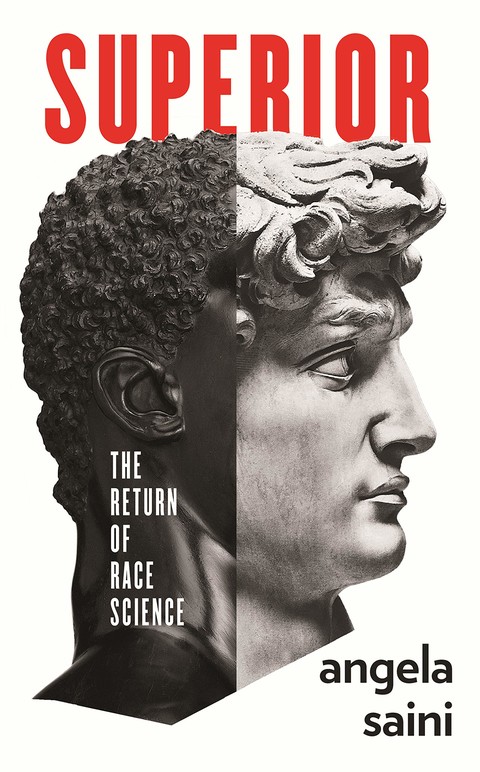
![PROLOGUEWhite European scientists began to define what we now think of as race [in the 18 century]... and [their] arbitrary classification would have lasting consequences. #Saini PROLOGUEWhite European scientists began to define what we now think of as race [in the 18 century]... and [their] arbitrary classification would have lasting consequences. #Saini](https://pbs.twimg.com/media/Ei1Ob9FXYAADhUY.png)
![Ultimately what matters isn’t necessarily where the lines are drawn, but what they mean. What does it mean to be black or white or something else, and why does it matter to us?[...] The power hierarchy had white people of European descent sitting at the top. #Saini Ultimately what matters isn’t necessarily where the lines are drawn, but what they mean. What does it mean to be black or white or something else, and why does it matter to us?[...] The power hierarchy had white people of European descent sitting at the top. #Saini](https://pbs.twimg.com/media/Ei1Qqk2WoAIYc92.png)
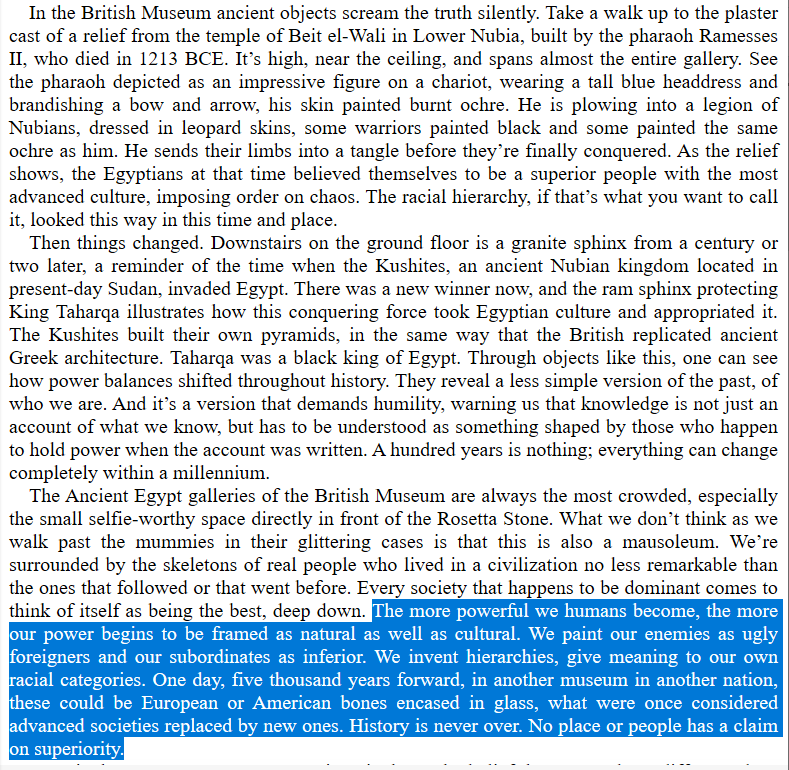
![Because this is how power works. [The British Museum] takes, it claims, and it keeps. It makes you believe that this is where the objects belong. It’s designed to put you in your place. #Saini Because this is how power works. [The British Museum] takes, it claims, and it keeps. It makes you believe that this is where the objects belong. It’s designed to put you in your place. #Saini](https://pbs.twimg.com/media/Ei1SyJdXYAAw3St.png)

![Bewilderment—or rather, an unwillingness to try and understand the [Australia& #39;s] original inhabitants—suited Europeans in the eighteenth century because it also served the belief that they were entering a territory they could justly claim for themselves. #Saini Bewilderment—or rather, an unwillingness to try and understand the [Australia& #39;s] original inhabitants—suited Europeans in the eighteenth century because it also served the belief that they were entering a territory they could justly claim for themselves. #Saini](https://pbs.twimg.com/media/Ei1UPWVWoAASwwP.png)

![“Smoothing the pillow [of a dying race]” was bloodthirsty work…. Equally harsh was the cultural genocide. #Saini “Smoothing the pillow [of a dying race]” was bloodthirsty work…. Equally harsh was the cultural genocide. #Saini](https://pbs.twimg.com/media/Ei1WH8-X0AA4UMD.png)



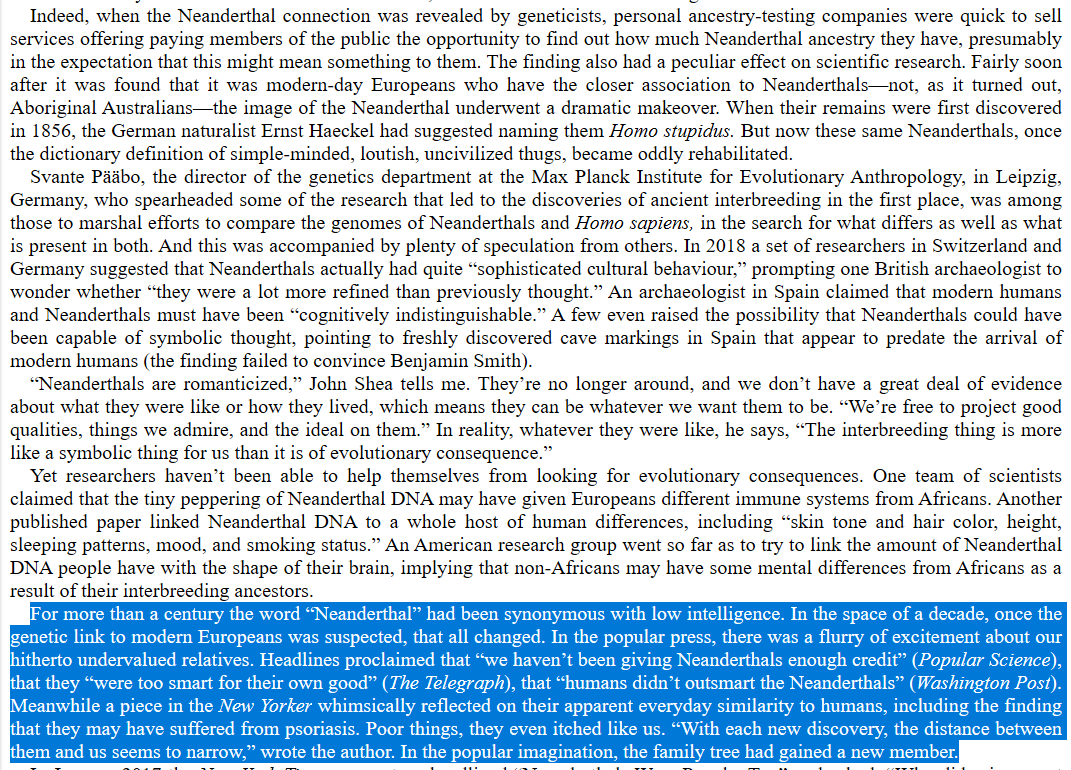


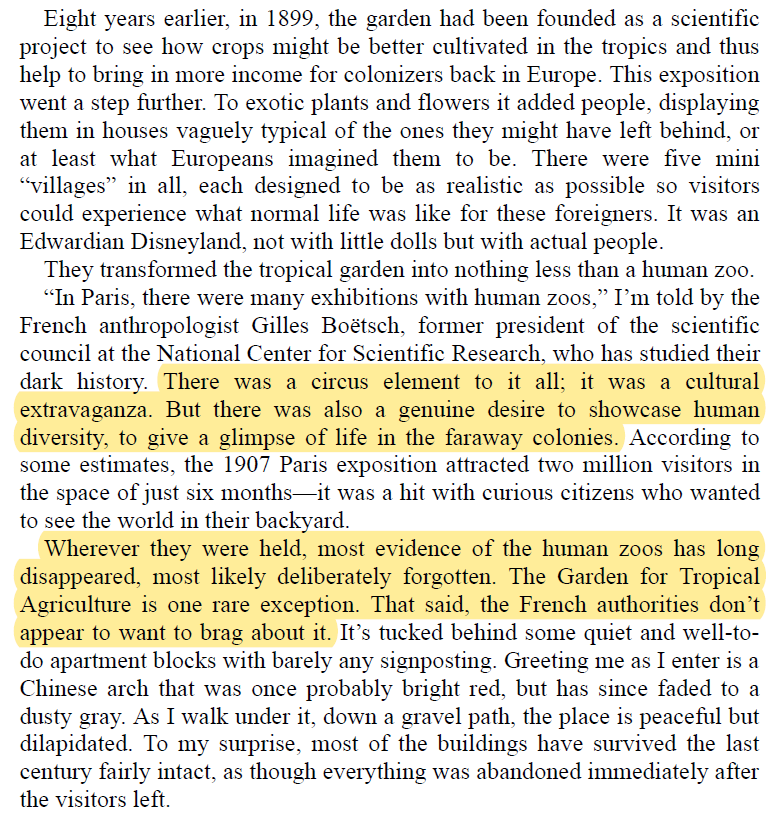


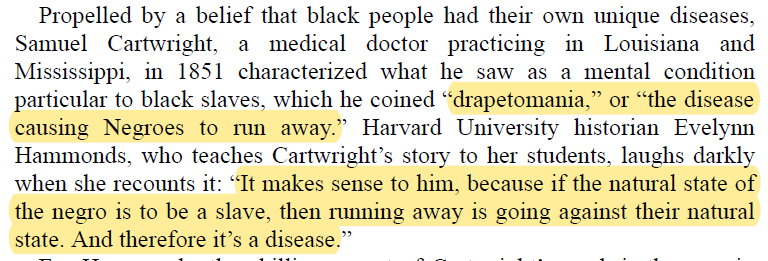



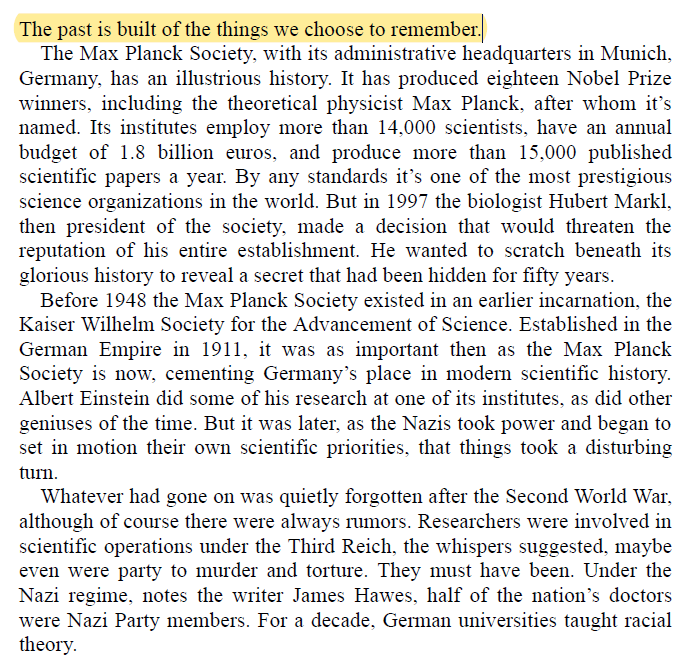




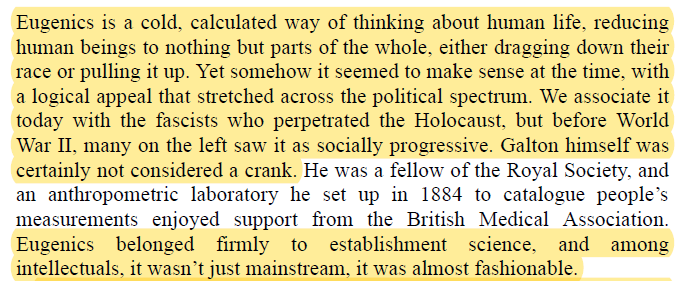
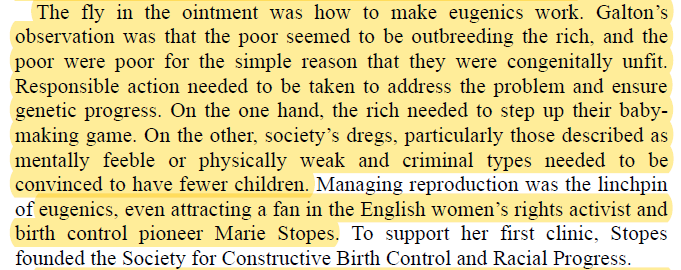
![Namibia was the first place where the Germans built a concentration camp [...] Depending on where your hair fell on the scale was the difference between life and death. #Saini Namibia was the first place where the Germans built a concentration camp [...] Depending on where your hair fell on the scale was the difference between life and death. #Saini](https://pbs.twimg.com/media/EkCdwrhXsAEOQ7b.png)
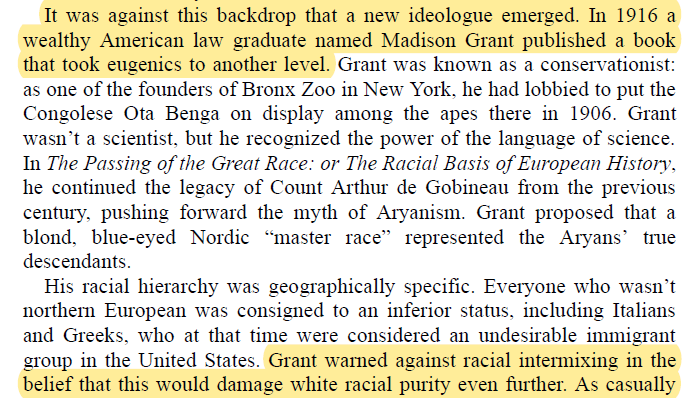

![[tell me again how the current US policy on immigration is different to that of the eugenics informed immigration policy of the 1910s and 1920s] [tell me again how the current US policy on immigration is different to that of the eugenics informed immigration policy of the 1910s and 1920s]](https://pbs.twimg.com/media/EkCfPSyXcAAlqKJ.png)
![Grant’s work was referenced by the Ku Klux Klan. […] Adolf Hitler wrote, “The book is my bible." #Saini Grant’s work was referenced by the Ku Klux Klan. […] Adolf Hitler wrote, “The book is my bible." #Saini](https://pbs.twimg.com/media/EkCgKmtXgAA19-G.png)
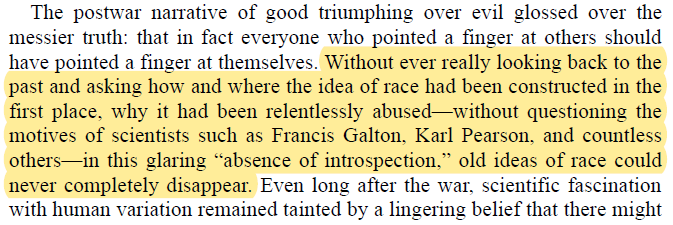
![[This, peeps, is how the racist pseudoscientific journal Mankind Quarterly came into being] [This, peeps, is how the racist pseudoscientific journal Mankind Quarterly came into being]](https://pbs.twimg.com/media/EkhcXiLXYAAvDX1.png)
![[This, peeps, is how the racist pseudoscientific journal Mankind Quarterly came into being] [This, peeps, is how the racist pseudoscientific journal Mankind Quarterly came into being]](https://pbs.twimg.com/media/EkhcjNeW0AEKKkc.png)
![[This, peeps, is how the racist pseudoscientific journal Mankind Quarterly came into being] [This, peeps, is how the racist pseudoscientific journal Mankind Quarterly came into being]](https://pbs.twimg.com/media/EkhcoT1WAAEYrAY.png)
![[This, peeps, is how the racist pseudoscientific journal Mankind Quarterly came into being] [This, peeps, is how the racist pseudoscientific journal Mankind Quarterly came into being]](https://pbs.twimg.com/media/EkhcyBKWAAEgP6-.png)
![The earliest editions [of Mankind Quarterly] included articles by Henry Garrett, a former president of the American Psychological Association and the head of Columbia University’s psychology department. #Saini The earliest editions [of Mankind Quarterly] included articles by Henry Garrett, a former president of the American Psychological Association and the head of Columbia University’s psychology department. #Saini](https://pbs.twimg.com/media/EkhdOd5XEAAXs5m.png)
![The earliest editions [of Mankind Quarterly] included articles by Henry Garrett, a former president of the American Psychological Association and the head of Columbia University’s psychology department. #Saini The earliest editions [of Mankind Quarterly] included articles by Henry Garrett, a former president of the American Psychological Association and the head of Columbia University’s psychology department. #Saini](https://pbs.twimg.com/media/EkhdbYOX0AMPvny.png)
![People want to believe that [racists] exist only in a sort of lunatic fringe, which is safely cabined off from the rest of society and that they have no consequences or implications for the future. #Saini People want to believe that [racists] exist only in a sort of lunatic fringe, which is safely cabined off from the rest of society and that they have no consequences or implications for the future. #Saini](https://pbs.twimg.com/media/ElFig6HXYAEUwru.png)
![People want to believe that [racists] exist only in a sort of lunatic fringe, which is safely cabined off from the rest of society and that they have no consequences or implications for the future. #Saini People want to believe that [racists] exist only in a sort of lunatic fringe, which is safely cabined off from the rest of society and that they have no consequences or implications for the future. #Saini](https://pbs.twimg.com/media/ElFipmDW0AIUohs.png)
![Should [publication such as Mankind Quarterly] or its contributors become popular, then we know that something is wrong. And in the last ten years [Mankind Quarterly& #39;s] impact factor has been on average higher than it was in the preceding decade. #Saini Should [publication such as Mankind Quarterly] or its contributors become popular, then we know that something is wrong. And in the last ten years [Mankind Quarterly& #39;s] impact factor has been on average higher than it was in the preceding decade. #Saini](https://pbs.twimg.com/media/ElFjoV8W0AAge06.png)
![[T]he kind of research once funded by the Pioneer Fund and still published by the Mankind Quarterly has now found fresh avenues of support. Scientific racism has come out of the shadows, at least partly because wider society has made room for it. #Saini [T]he kind of research once funded by the Pioneer Fund and still published by the Mankind Quarterly has now found fresh avenues of support. Scientific racism has come out of the shadows, at least partly because wider society has made room for it. #Saini](https://pbs.twimg.com/media/ElFlsOhXUAE1AzM.png)
![[& #39;race realism& #39; is simply a code word for & #39;racism& #39;]* *everything inside [] on this thread is my phrasing [& #39;race realism& #39; is simply a code word for & #39;racism& #39;]* *everything inside [] on this thread is my phrasing](https://pbs.twimg.com/media/ElFmNo8XUAEFFEz.png)


